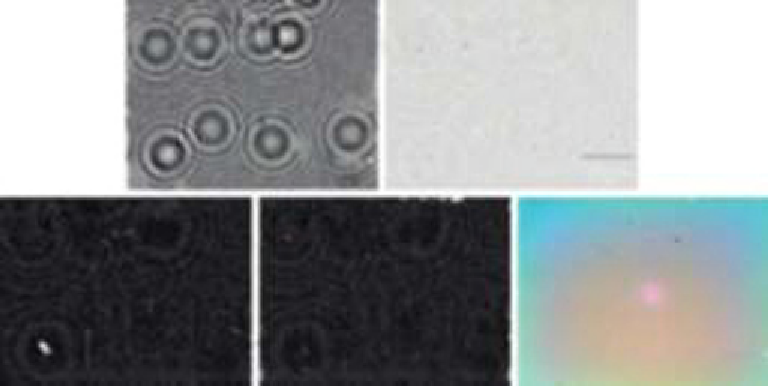Biomedical Engineering Reference
In-Depth Information
laboratories, fertility clinics, male fertility tests, as well as for field use in veterinary
medicine.
8.2 Partially Coherent In-Line Holography on a Chip
Holography indirectly records the optical phase information through amplitude oscillations
generated by the interference of coherent optical waves. For making use of this phase
information toward microscopy, most existing lensless in-line holography systems require a
high level of spatial and temporal coherence and therefore utilize a laser source that is
filtered through a small aperture, e.g., 1
61]
. The optical set-up,
however, can be made simpler and more robust if a completely incoherent light source
filtered through a large aperture (e.g.,
.
100
2
μ
m wide
[6,53
200
λ
in diameter) could be used
[11,62]
.
(A)
(B)
50
µ
m
50
µ
m
(C)
(D)
(E)
50
µ
m
50
µ
m
50
µ
m
Figure 8.2
(A) A digitally cropped lensless hologram that is captured with the device in
Figure 8.1A
shows
the hologram signatures of eight immobilized sperms. (B) The locations of the heads of the
sperms are revealed by an amplitude image reconstructed from the raw hologram shown in (A)
for the same FOV. (C) Both the heads and the tails of the sperms are illustrated by the phase
image reconstructed from the raw hologram shown in (A) for the same FOV. (D) Automatic
characterization results are generated based on the reconstructed phase image in (D). Red circles
enclose the elliptical areas corresponding to sperm heads while green lines label the tails.
Defective sperms with missing or unusually curved tails (marked with the white arrows in (D)) are
not reported toward positive sperm counts. (E) To verify the results in (D), a bright-field
microscope image is acquired with a 40
0.65) for the same FOV as in (A).
For interpretation of the references to color in this figure legend, the reader is referred to the web
version of this topic.
objective lens (NA
3
5


Search WWH ::

Custom Search